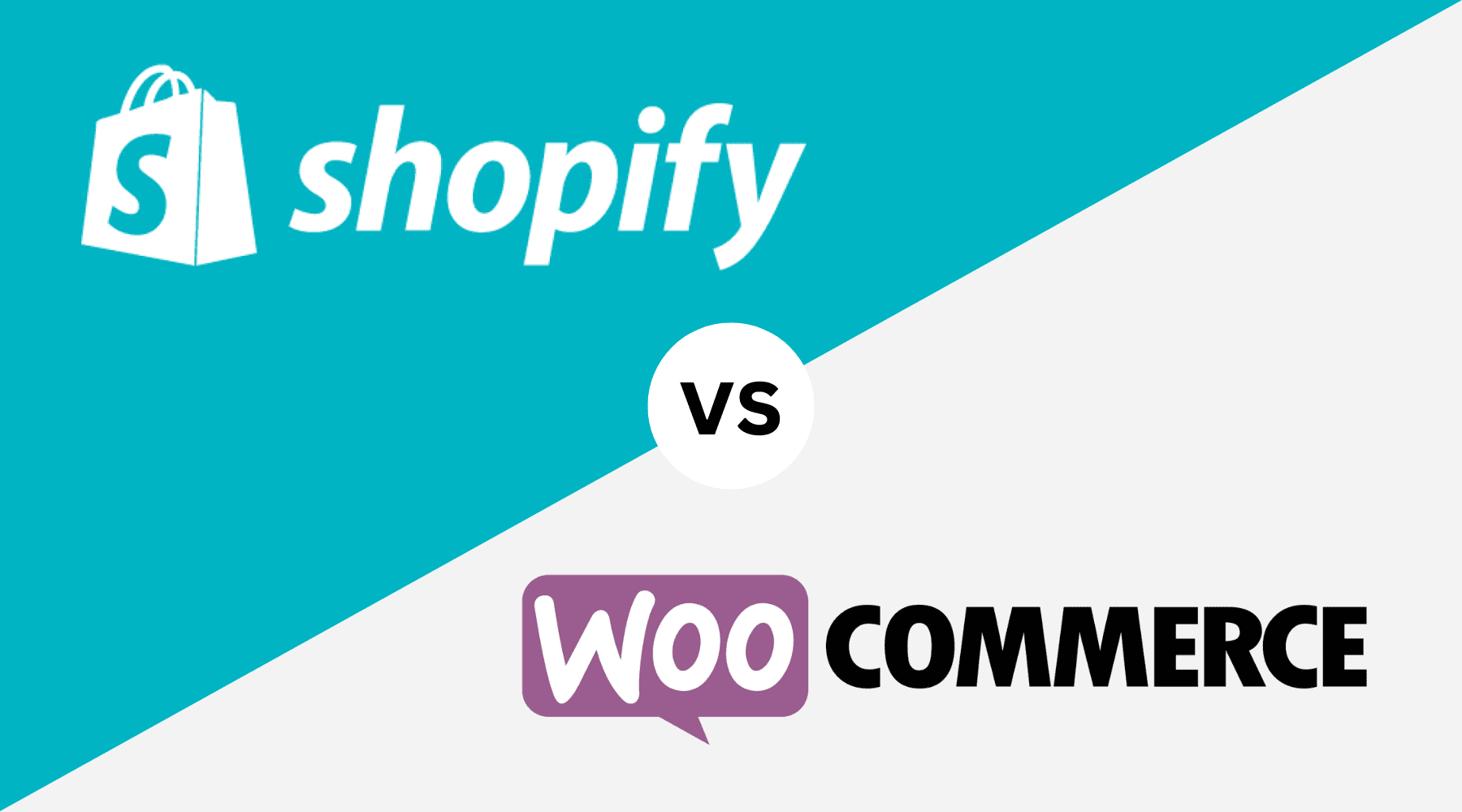You want a shop that works. For that, you need the right foundation. And it starts with choosing the right system. WooCommerce and Shopify are fundamentally different.
One approach: software-as-a-service with fixed structures and low maintenance. The other: open source with full control, but more effort. Which one fits you better depends on your requirements and on how you work.
In this article, I’ll show you how both systems are built technically, what you need to pay attention to, and how to choose the platform that lets you scale your shop reliably.
WooCommerce vs Shopify: How the systems work
Shopify takes care of the entire infrastructure. You sign up, choose a theme, customize your shop, and start. Hosting, security, updates, everything runs through the platform. You don’t need any technical setup, but you also work within clearly defined limits.
WooCommerce works differently. You install a plugin on your own WordPress site, choose hosting, set up your server environment, and manage everything yourself.
Themes, plugins, security, and maintenance stay in your responsibility. You decide what happens, but you also carry full responsibility for performance and operation.
Every e-commerce platform requires decisions that directly affect day-to-day operations. With Shopify, you work with a closed system. That means less technical freedom, but more stability. Development is faster, maintenance is easier, and the focus stays on commerce functions.
With WooCommerce, you get maximum control. You have access to the code, you can customize every process, and you handle every integration yourself. Without technical knowledge or experienced partners, you can quickly block your own progress.
Both systems work well, but only if you understand the technical framework and manage it consciously.
5 key differences between Shopify & Woo that you need to know
1. Design freedom vs. design control
Shopify gives you ready-made themes that you can customize quickly. Colors, layouts, and fonts can be adjusted directly through the user interface. If you want to go deeper, you can edit the theme code in Liquid. However, many features remain predefined and can only be modified within the existing framework.
With WooCommerce, you control the design completely. You work directly in the code, customize templates individually, and integrate your own functions without limitations. This allows you to define exactly how the shop looks and how it behaves, from the frontend to the checkout logic.
2. Technical requirements: Do it yourself or delegate?
Shopify reduces technical tasks to a minimum. You set up products, configure shipping options, and use apps for additional features. Updates run automatically. The platform stays stable as long as you work within the system.
WooCommerce requires technical understanding. You manage servers, check plugin compatibility, and secure your system regularly. You plan every change, test it, and make sure your shop stays performant. Without an internal tech team or a specialized agency, this quickly becomes a bottleneck.
3. Hosting, security, maintenance: Who is responsible?
With Shopify, the platform handles everything. You don’t choose servers, install SSL certificates, or update software. The infrastructure scales automatically, and support reacts when problems occur.
With WooCommerce, you select the hosting provider, install SSL, set up firewalls, and take care of regular updates. The infrastructure stays under your control, but that also means full responsibility for its stability. The more complex your setup, the higher the maintenance effort.
4. Integration & extensibility in daily business
Shopify provides an app store with verified applications. You install features with a few clicks, but you must accept certain limits. Not every app can be customized or deeply integrated into the system. Many processes remain standardized and follow fixed structures that you can only change to a limited extent.
WooCommerce allows deep integrations. You develop custom plugins, build interfaces to ERP, PIM, or fulfillment systems, and control all workflows individually. You connect tools that match your requirements exactly — without detours through external providers or restrictions set by the platform.

5. Flexibility vs. speed in time-to-market
With Shopify, you can start immediately. Choose a theme, upload products, activate the checkout, and go live. The platform gives you a working shop without development time.
With WooCommerce, the planning phase is longer. You develop the setup, test functions, and adjust everything to your requirements. Launching takes more time, but it’s worth it if you need to map complex processes or integrate existing systems.
Shopify vs WooCommerce: The biggest advantages and disadvantages
Each platform has strengths and weaknesses. What matters is not which system offers more features, but which one fits your commerce processes better. The shop system comparison shows where you have room to make adjustments and where platform limitations need to be followed.
|
criteria |
Shopify |
WooCommerce |
|
Infrastructure |
Hosted, maintenance-free |
Self-hosted, maintenance-intensive |
|
Adaptability |
Restricted via themes and apps |
Fully customizable in code |
|
Time to market |
Live quickly |
Greater effort before go-live |
|
Extensibility |
App ecosystem, but limited |
Seamless API connection, full control |
|
Support |
24/7 through Shopify |
Depends on hosting partner or agency |
|
Control over checkout |
Restricted |
Fully controllable |
|
Scalability |
Strong, but expensive in higher plans |
Flexible, but dependent on hosting |
|
Data protection |
Customizable via apps |
Directly implementable with EU hosting |
Shopify takes many tasks off your hands as your shop grows. The platform stays stable even under high load. You use a scalable system, but you also have to deal with rising fees and fixed limits. Every customization costs money, whether it’s in the checkout, special logic, or more complex integrations.
WooCommerce gives you the control you need for individual growth. You build processes that fit your setup exactly. Scaling, however, depends on your hosting and your technical foundation. Without experience or the right partners, things quickly become confusing.
Both systems can scale but in different ways. What matters is how much control you need and how much infrastructure you can handle yourself.
Performance & SEO: How differently both platforms perform
Loading times, Core Web Vitals, structured data
Shopify delivers strong performance directly from the platform. The server structure is optimized, pages load quickly, and you achieve stable Core Web Vitals. You don’t need extra tools to improve loading times; everything runs through Shopify’s infrastructure.
With WooCommerce, performance depends on your setup. You choose the host, configure the server, and optimize everything yourself. When done well, loading times can be excellent. Without optimization, speed and visibility decline.
Both systems can load fast. With Shopify, it happens automatically. With WooCommerce, you have to make it happen.
SEO benefits through theme plugins
Shopify gives you clean themes with a clear structure. The templates meet technical SEO requirements, and you can add metadata in the backend. You optimize meta descriptions, set canonicals, and add alt texts without external plugins.
WooCommerce works through WordPress. This gives you access to a full CMS with deep SEO options. You control content, URLs, metadata, and sitemaps in detail. The structure stays flexible, as long as you choose a proper theme and configure it correctly.
Yoast vs Shopify apps: which gives you better long-term visibility?
With Yoast, you control your SEO in WooCommerce on a page-by-page level. You analyze content, control snippets, and generate structured data directly in the editor. You benefit from everything a CMS like WordPress offers.
With Shopify, you need an app for many of these functions. You install it, adjust settings, and add technical SEO fields to your pages. It works, but it’s not as deep as Yoast. For simple shops, it’s enough. For more complex SEO strategies, you will hit limits.
If you want to scale content long-term, WooCommerce gives you more control. If you want solid SEO without a deep technical setup, Shopify gets you there faster.

GDPR & Data Protection: what you need to watch out for
WooCommerce gives you full access to all data. You decide the server location, the services you integrate, and where personal information is stored. This also means you are responsible for meeting all data protection and legal requirements. Cookies, consent, and data deletion can be implemented individually.
Shopify hosts your data outside the EU by default, usually in data centers in the USA. You sign a data processing agreement with standard contractual clauses according to the GDPR. A cookie tool like Cookiebot or Consentmanager ensures that third-party scripts only load after consent. Your privacy policy must describe these processes accurately.
You work with a system that provides GDPR-compliant basics, but not every area is fully covered. Especially for tracking, third-party integrations, and legally compliant forms, you need additional solutions.
Both systems can be operated in a GDPR-compliant way. The difference is who controls the technical access.
If you want to sell in a legally compliant way, you should not only implement GDPR rules, you should plan them technically. Set up your hosting so that personal data stays in the EU. Use a cookie banner that loads scripts only after consent. Configure your payment providers properly and document all data processing steps.
With WooCommerce, you handle this through plugins and server settings. With Shopify, you set up external apps and add the necessary information manually.
What does your shop really cost? Price comparison
The question seems simple but often leads to wrong calculations. Many people compare monthly fees, hosting prices, or theme costs. What really matters are the ongoing expenses in relation to your business model.
Getting started is easy: a few clicks, and the platform runs stably. You also get a transparent pricing structure. You can start with the Basic plan at €39 per month.
As your shop grows, the standard plans often reach their limits. Shopify Advanced costs €299 per month and is suitable for shops with high revenue, heavy traffic, and complex needs. It includes advanced reports, better shipping rates, and lower fees for external payment providers.
If you need full control over APIs, international sales, and checkout processes, Shopify Plus is usually the only option. Starting at around €2,000 per month, you get advanced enterprise features, unlimited staff accounts, and individual customizations.
With WooCommerce, the cost structure looks completely different. The system itself is free, but almost everything else grows dynamically. You pay for hosting (from around €20 per month), themes (between €50 and €100 per year), and plugins (€30 to €300 per year).
You also need to take care of security, backups, and updates, or hire a technical team or e-commerce agency. Depending on the level of support, costs range from €500 to well over €2,000 per year.
The biggest mistake is assuming WooCommerce is cheaper just because the base system is free. In reality, the effort shifts. You pay less at the beginning but significantly more in the long run, not only in money but also in time and responsibility. If you don’t factor this into your calculation, you’re planning in the wrong direction.
You should therefore look not only at entry costs but also at your resources for hosting, technical maintenance, and further development.

Practical tips: These 5 mistakes shop owners make when getting started
A shop system does not automatically lead to success. Many store owners underestimate how strongly technical decisions influence day-to-day operations later on. If you set the wrong direction from the beginning, you limit yourself in daily work or lose revenue and flexibility in the long run.
These five mistakes should be avoided:
- You decide based on gut feeling instead of requirements:
Many people choose their system because they heard somewhere that it’s “easy” or “flexible.” But what you need depends on your business model. Check your processes, integrations, and scaling goals, then make a clear decision. - You confuse freedom with control: WooCommerce gives you all the freedom, but no structure. Without a system for maintenance, testing, and version control, you lose oversight quickly. Every new function becomes a risk if you don’t develop or test cleanly. Freedom only helps if you can manage it.
- You underestimate how your tech stack affects your margin: If you use systems that require many manual steps, you pay for it with time. Every workaround and missing automation reduces efficiency. A performant stack automates workflows, reduces errors, and improves your unit economics. Your margin depends directly on the quality of your processes.
- You choose short-term solutions instead of scalable structures: What works today may slow you down tomorrow. If you only focus on speed at the beginning, you will have to rebuild everything later at high cost. Plan interfaces, data models, and processes so they can grow. Scaling starts with the technical foundation.
- You build your shop without clear responsibilities: A system like WooCommerce requires technical knowledge. If no one regularly checks, updates, and optimizes it, errors will slip in. With Shopify, many things are handled for you, but you lose some depth. Choose the system that fits your organization, not the other way around.
Why many move from WooCommerce to Shopify
WooCommerce works well as long as your shop stays manageable. Once you start scaling regularly, you run into technical limits. Loading times increase, plugin conflicts become more common, and every update brings the risk of breaking important functions.
You need to test, secure, and document everything before you can continue developing. If you can’t handle these processes internally, you lose speed. This is exactly where many shop owners decide to switch.
With Shopify, you don’t need your own system architecture. You focus on products, marketing, and conversion, not on maintenance, hosting, or compatibility. The platform takes care of servers, security, and software updates. That means you implement changes faster, reduce technical dependencies, and keep control of your operational pace.
Shopify Plus especially offers features that WooCommerce cannot match. The Shopify Plus advantages lie in direct checkout control, API access, process automation, and global scaling. You work with scripts, set up your own logic, and integrate systems without restrictions.
You create custom scripts, segment customers in the backend, and automate processes that would require complex custom development in WooCommerce. Shopify Plus works like a scalable operating system for commerce.
Most shops switch because they underestimated the effort behind WooCommerce. They start flexible but eventually end up in a tight corset of plugins, hosting issues, and development bottlenecks. Switching to Shopify breaks these chains. You regain speed, reduce live-system bugs, and accelerate every iteration. At the same time, you gain more stability in daily operations.
The switch pays off not because Shopify is cheaper, but because you regain resources: time, team capacity, scalability. And that’s exactly what you need if your shop is not meant to stand still.

When WooCommerce is the better choice and for whom
WooCommerce gives you advantages when you want to build a fully customized system that fits your requirements exactly. You work with an open-source core, develop your own features, and integrate systems that operate outside the standard. If you want to combine content and commerce, you use the full range of a CMS, from dynamic content to product logic.
WooCommerce offers a real benefit especially in publishing, memberships, or unique business models. You control roles, permissions, and processes in detail and combine content with transactions. For shops that rely heavily on content-driven SEO, the system also creates a technical advantage. You shape the structure, build landing pages natively, and optimize metadata directly within the system.
If you have an internal development team or work with a technical partner, you gain additional value from the openness of the system. You implement specific logic, manage the infrastructure yourself, and design shop processes without platform restrictions. This creates a level of flexibility that platform solutions cannot offer in the same way.
WooCommerce is particularly strong where business models move beyond classic product sales. If you want to implement subscriptions, digital products, or highly customized product configurations with many parameters, the system gives you the necessary depth. You can expand your setup step by step without hitting platform limits.
If you understand the technical foundation or work strategically with a dev team, WooCommerce gives you a system that offers full control and maximum expandability. The challenge lies in the technical responsibility, the benefit lies in complete creative freedom.
WooCommerce vs Shopify: how Datora helps you decide
If you’re choosing between WooCommerce and Shopify, the system is only part of the decision, the technical implementation is just as important. As a Shopify Plus agency Datora develops solutions that match your requirements exactly.
We analyze your setup, review your processes, and create a clear technical basis for your decision. The goal is not to sell one system but to identify the right foundation for your shop.
Datora supports you throughout the entire technical decision-making process. We evaluate which commerce functions you need, how your business model is structured, and what your tech stack must handle long-term.
If Shopify Plus is the right choice for you, we don’t deliver a generic setup, we build a shop infrastructure that goes beyond standard features.
We integrate custom functionality directly into your Shopify Plus setup. This includes API integrations, custom checkout processes, complex logic in the cart, or workflows that cannot be implemented with apps.
You don’t get templates, you get a technically precise platform that reliably reflects your commerce processes.
As a technical Shopify agency, our focus is not on themes or storefronts but on the processes behind them. We scale operations, optimize structures, and make sure your shop runs smoothly, even when your setup requires more than standard features.
If you can’t decide between Shopify and WooCommerce or if you already use Shopify and want to get more out of your setup, you’ll find the right technical foundation here.

Conclusion
Your choice of shop system determines how you work, scale, and develop. You don’t need a one-size-fits-all recommendation, but a clear assessment based on your requirements. There is no perfect solution for everyone, only systems that fit your setup better or worse.
If you want to get started quickly, handle little administration, and focus on commerce functions, Shopify is usually the better fit. You work on a stable platform, outsource maintenance and hosting, and don’t need a technical team.
If you want to automate processes, serve international markets, or implement complex checkout logic, you’ll need Shopify Plus. It gives you direct control through scripts, lets you integrate external systems, and allows you to develop advanced features via the API.
If you need full control, your team can take technical responsibility, and you want to develop your system step by step, WooCommerce can work but with significantly more effort.
Ask yourself which resources you can handle internally and where you need external expertise. Shopify provides operational stability if your goal is to run commerce efficiently. You reduce complexity in daily operations and stay able to respond to new requirements.
Don’t make your decision based on gut feeling. Think about what you will need, not today, but in six months. Choose a system that doesn’t limit you but supports your growth.








